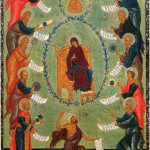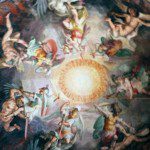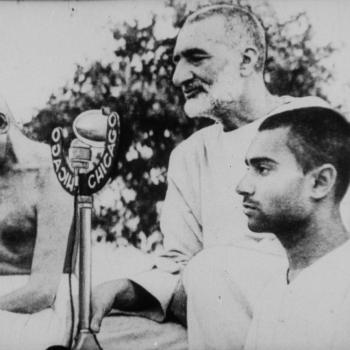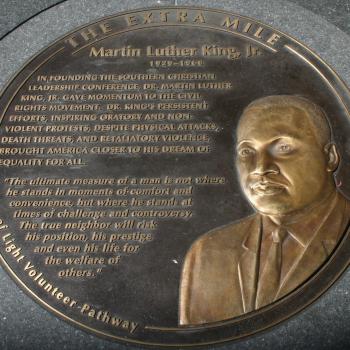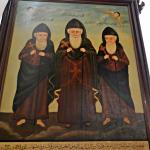7. The Aztecs
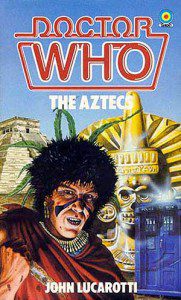
From the first season of Doctor Who, the First Doctor, William Hartnell, with his granddaughter Susan, and her teachers from school, Ian and Barbara, find themselves in the ancient Aztec empire. The TARDIS had landed in a tomb; Barbara, looking around, found a bracelet which she put on. When they leave the tomb, they are found by Aztecs who see the bracelet on Barbara and assume she is a new incarnation of the goddess Yetaxa.
Barbara, a history teacher knowing the brutality of Aztec sacrifices, hoped she could change history and tries to forbid their sacrificial rites, finding herself in conflict with the Doctor (who tries to warn her she cannot change history) and some of the priests who begin to denounce her as a false god.
The religious element of the story involves the kind of internal conflicts within a religious people, the diverse questions some might ask, and the way some will seek to reinforce poor answers through force while causing those who seek better answers to go unto exile (or worse, be killed). Barbara is not able to change history, but she is able to help (if that is the proper word) the High Priest of Knowledge, Autloc, to question his belief and so to instigate in him and his way of life a reform, though a reform which is not to be taken in by the rest of the Aztecs.
The story is one of the best historical adventures of the whole series; while the religious theme is there, the Doctor himself wants to avoid changing history, and so avoid challenging the doctrines believed by the Aztecs, even though he agrees with Barbara that their brutality is wrong. While we do not have the luxury of the Doctor of going into the past, and so, questioning what we would do or not do if we could change it, there is still an element of religious debate which emerges: how much interference should we have with people of other cultures and faiths if their beliefs and practices are seen to be abhorrent to us? The Doctor is not exactly favorable of the tolerance of evils, but he knows there are limitations of what he can and cannot do; we too, have to realize this in our relation with other religions and faiths and work with similar limitations. We might disagree with other faiths and think many of their practices are wrong, we might be able to encourage some to change their beliefs and practices, but in the end, we must also find a way to accept different beliefs and faiths lest we end up removing religious liberty and our ability to practice our faith. In this story, Barbara is the idealist who thinks change can be had easily, only to find such change is often not possible and can be, in its own way, destructive or harmful, if the change is incapable of being implemented in the right way.
The story does not seek to be a story about religion, nor to preach about the horrors of the Aztec sacrificial rites, but to be a presentation of history through a rather enjoyable dramatic engagement with history. Religion, however, is central to the story because it was central to the Aztec civilization as a whole. It is not about religion as much as it is about how civilizations exist in and with religion, making it difficult to change one without changing the other.


